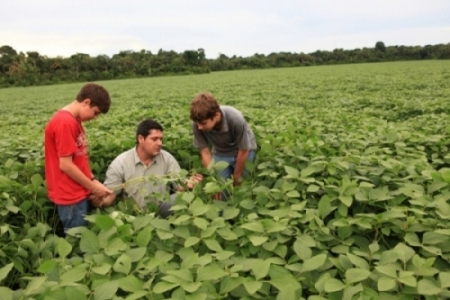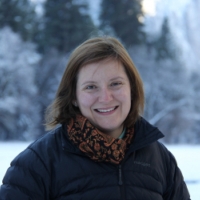Teams Like This
Critical land-use decisions are often made without understanding the full range of potential tradeoffs different land-use choices might yield among social, economic and environmental values. This group will model and field-test values for habitat for biodiversity, water quality and water quantity related ecosystem services, carbon sequestration, and economic returns from grazing, crop and timber production, and other market oriented activities.
OUR APPROACH: The team evaluated case studies of land-use tradeoffs, focusing on the interaction of forest code enforcement and soy production in the Brazilian Amazon and Cerrado regions, and the discord between sage grouse conservation and livestock grazing sagebrush ecosystems of the Western United States.

Land Use Case Studies
The team identified 1) how forest code enforcement, extension of the soy moratorium, and spatial expansion would affect agricultural production, habitat loss, and forest protection, 2) how potential restrictions on grazing on public lands could indirectly affect habitat conversion on private lands via changes to ranching income, and 3) how habitat conservation would provide co-benefits from other species and ecosystems services within priority sage grouse conservation areas.
Incorporating Private Landowners into Large-Scale Conservation Planning
The team confirmed the importance of modeling private landowners’ economic decisions for informing conservation, land use planning, and federal policy. One of the most surprising findings was that unintended consequences are prevalent when this factor is ignored in large-scale conservation planning.

“When it comes to a choice between ranching, farming, or housing in the West, sustainable ranching is the most compatible with wildlife.”
-Claire Runge, Team Member
These data sets include yearly maps of land cover classification in Brazil’s Mato Grosso State from 2001-2016. The data tracks natural and human-transformed land areas and discriminates among different agricultural crops.
This technical report was the first from this team. It investigated the effectiveness of the Soy Moratorium in Brazil in reducing deforestation and protecting biodiversity.
By considering links between public and private land, we show that attempts to improve habitat on public lands via grazing restrictions could result in unintended habitat loss on private lands.
Through modeling and spatial data analysis, the team found that banning soy production in the Cerrado biome would be the most effective way to protect it long term. Though the risk agriculture may pose to the Cerrado will depend on global soy demand and other complexly interacting factors, the team found that expanding the Soy Moratorium to include this unique ecosystem could protect 3.6 million hectares by 2050.
World Wildlife Fund
The Nature Conservancy
University of Minnesota
Wildlife Conservation Society
Instituto de Pesquisa Econômica Aplicada
Wildlife Conservation Society
International Institute for Applied Systems Analysis
University of California, Santa Barbara
University of California, Santa Barbara
Oregon State University
Wildlife Conservation Society
Bowdoin College
Instituto Nacional de Pesquisas Espaciais
Instituto Nacional de Pesquisas Espaciáis
Florida International University
University of Washington
World Wildlife Fund
World Wildlife Fund
Woods Hole Research Center
International Institute for Applied Systems Analysis
Environmental Defense Fund
University of Wisconsin
University of Wisconsin